
AGORA is an international group of volunteers dedicated to providing noncommercial aromatherapy education articles via donated web space on the internet
Homedistillation pages:
Distillation of Matricaria recutita(German chamomile)
Dear visitor,
I receive a lot of questions about home distillation of essential oils and hydrolats. I would like to demonstrate with the following images that it's not so difficult at all. You need to make an investment in some distillation equipment, of course.
I will not explain the distillation theory here (you can find this on the AgoraFAQ pages), but simply show you some images. .
.You need some place in a kitchen to install your distillation equipment first.


I use a inox steamer and was lucky to be able to easily attach a tube to it, to bring the steam to the alambic. I can add about 4 liters of water in it, enough for a distillation of at least two hours...

I add some weight (bottles filled with water) in order to stabilize everything.



First the details of the cooling system, then deatails of the alambic.


I filled the alambic with dry Matricaria chamomillae (German Chamomile). Then I need to close the ring between the alambic and the top, in order to prevent the loss of vapour.


Details of the top of the alambic. Adding of the top, the connection between the alambic and the cooling system.


Once the top is added, a connection is added to keep everything together, since the vapours will exercice a certain pressure to the connections.


Details of the connections between the glass tubes.


Finally the closing of the steam producing unit and starting to heat the water.


We open the van with cold water to condensate the vapours in the refrigeration tube.


We add a separation glass under the refrigeration tube to collect the hydrolate and the essential oil.

Distilling German Chamomile is a special event: the hydrolate is of a milk aspect, you see the blue chamomile essential oil floating all around...

Details of the chamomile essential oils... Other essential oils form a nice oil above the water (most oils are floating), clearly separated from the hydrolate.

We were only distilling 330 gram dried chamomile flowers, so the yield is quit low and difficult to separate.
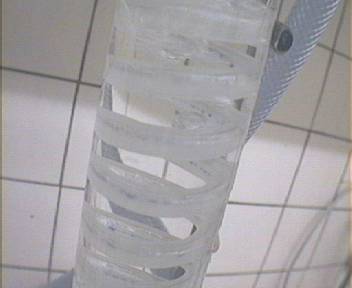
Details of the forming of the essential oil within the refrigeration tube
(blue drops...).
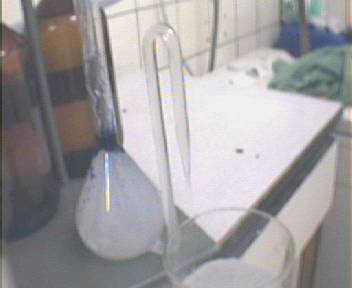
Separation unit.

After the distillation, our yield of blue chamomile essential oil.
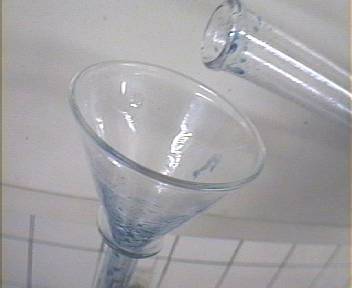
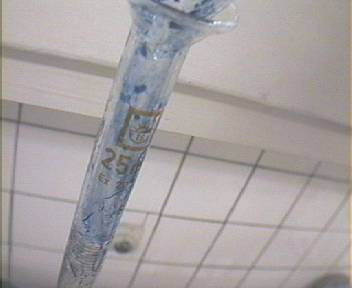
We finish by separating the water from the essential oil.
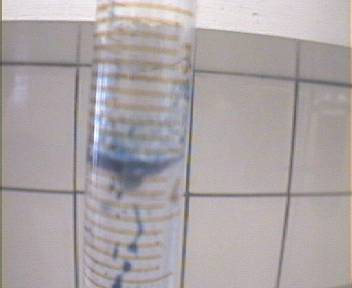
This page is hosted by Michel Vanhove
Нема коментара:
Постави коментар